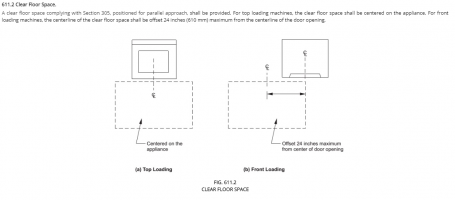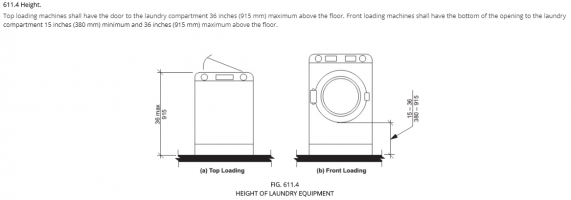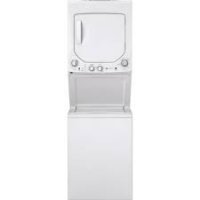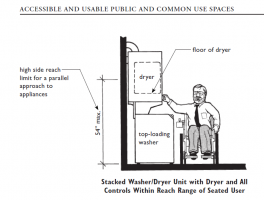Ryan Schultz
Registered User
From my understanding, they make stacked washer/dryers that are ADA compliant.
Assuming that is correct, with a stacked washer/dryer arrangement in a Type B Unit, can the 30"x48" clearance be a forward approach, or would it need to be a parallel approach centered on the fixture, as illustrated below? Thus, we would need to make this closet wider, as a result.
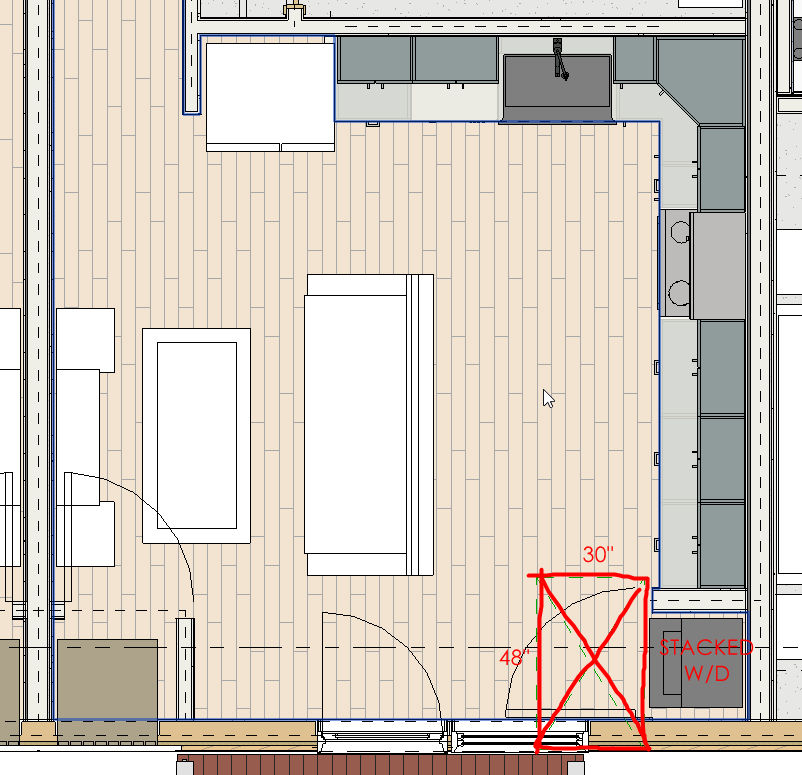
Assuming that is correct, with a stacked washer/dryer arrangement in a Type B Unit, can the 30"x48" clearance be a forward approach, or would it need to be a parallel approach centered on the fixture, as illustrated below? Thus, we would need to make this closet wider, as a result.


